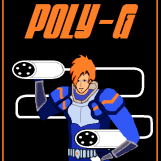Search the Community
Showing results for 'STM32F4'.
-
Dear Forum, I am trying to attach my SD Card using direct wiring, so no Core Board to host the STM32F4 Disc Board. For this I connected the SD Card Holder as written in red into the scheme, but Mios_Studio keeps on telling me, that no SD Card is found... Any help is appreciated, thanks! Emre
-
Hi I am in the research phase to build one of these beauties. I want to add an Ethernet port for the BLM emulator. Since the LPCXPRESSO is unavailable I believe I have to go with the MBHP_CORE_STM32F4. Has anybody used the MBHP_ETH sucessfully with this core? Is there a pcb/gerber for the MBHP_ETH available to buy? Cheers 6040
-
-edit- all parts are now sold! I have some kits for building Midibox Seq v4, all unbuilt/unused. SEQ CS pcb (smashtv) SEQ CS parts kit (smashtv) AOUT_NG kit (smashtv) STM32f4 core kit 2x MIDI IO kit I think I paid around £220 inc import taxes for the smashtv parts, the other bits were around £80. Asking £200 or make an offer. Located in UK, will ship WW.. happy to split shipping costs. Will add photos asap.
-
Hey everyone I'm trying to connect my MF_NG module to my STM32F4 Core via the MIOS IO. When connected via a different midi interface, the MF_NG module works perfectly fine. But I cannot get the connection via the MIDI IO module to work. Is there any special configuration in the NGC file I need to consider? I tried to route the incoming midi signals to the core like this: EVENT_MF id=2 ports=11111111000000000000 MF n=1 enabled=1 midi_in_port=IN1 midi_out_port=OUT1 config_port=USB2 chn=1 ROUTER n=1 src_chn=All dst_port=OUT1 I'm guessing it's wrong. Has anybody the answer to this? I'm starting to loose my mind over here... All the best! Frederik
-
Hi! I am looking for Core STM32F4 kit + board. Maybe someone has one for sell? Regards, Michał
-
do you need it for lpc17 or STM32F4 board? (ask because the tread was started for the other way round...)
i cant download the Gitubfiles (dont see a download button, and i am a offline coder...)... so i can take the one i have on harddisc - it is from 23.OCT 2018 (dont know if they are the same)--- or you show me how to download it...
-so lpc or stm32F4?
-
Selling due to being too lazy to ever actually do any projects anymore... I have basically all the actual parts needed to build a MIDIbox Quad Genesis - barring all the generic parts like resistors/capacitors/ICs you'd need to add. That is: these boards and associated kits, including MIDI DIN sockets, included resistors, etc. - as originally bought from the MIDIbox Shop - so please see the links below for the full specs of what you'll be getting. 1 x Core STM32F4 kit + board = RRP $34 2 x MIDI I/O module kit + board = RRP $27 x 2 = $54 4 x MIDIbox Genesis Board (for YM2612) = RRP $5 x 4 = $20 1 x front panel PCB - this is a rare one, bought from Sauraen! = RRP $50 -- These are in brand new condition - I'd never even opened the parcels until recently... - and ready to go. Original prices are in the list above. That totals $158 USD, which is about £120 right now, but I'd definitely take £100 all in. I'm open to sensible offers. They need a home that'll use them, not just to lie in my next cupboard! Shipping will be from the UK. If you're in the UK, I'll ship for free. As for elsewhere, I've had a lot of experience of shipping cheaply worldwide lately, so it should be quite cheap, but message me first for a quote to confirm. -- Pictures of the items and original invoices showing the quoted RRPs are on imgur, since I get errors when trying to upload here: https://imgur.com/a/MNv5hE0 For more detail, I have uploaded front/rear pics of the front panel PCB, as well as front/rear photos of the 3 sets of kits: see them here: https://imgur.com/a/RY1RtLO The board in the photos captioned "OPN2 boards" are still shrink-wrapped, and I didn't disturb them by unwrapping. However, you can see they are more than just the OPN2 boards! We have 4 of the Genesis/OPN2 boards that were sold at the Shop (link), i.e. the green ones other, black PCBs: 2 shown on the top, which based on the IN/OUT connectors are definitely the MIDI PCBs another black PBC in between the above 2 sets, which must be that for the Core CPU kit. As for buying YM2612/YM3438/PSG chips, it looks like there are still plenty for sale on eBay, and probably elsewhere too. I might have some in storage that I could sell, but need to check.
-
Hi here, I try to modify the pin definition mapping between MIOS and hardware because I use a STM32F4VGT alternative board with a sd card directly implemented and the pins are differents for the midibox standard pins. I need to swap this standart Midibox Ports to this new ones : Midi box | Alternatie board From : To : How can I do that ? Thanks a lot by advance !
-
Hi Here, I would like to know if it is possible to flash the mios Bootloader and mios applications on other cards than STM32F4-DISCO, for exemple on this boards : https://github.com/mcauser/MCUDEV_DEVEBOX_F407VGT6 I would like to know how it would be difficult to make Mios studio working with newer stm32 board like Teensy 4.0 or Stm32H743 board like https://github.com/mcauser/MCUDEV_DEVEBOX_H7XX_M Thanks for all, Best
-
Hi, I im trying to run simple character lcd, without core module, but keep getting some random chars, or even just blocks, but it keeps blinking. I followed schematic from uCApps page for STM32F4, but the part to set Luminance i dropped and simply connected it to ground, Could be this a problem ? Tried to connect from scratch everything a few times, but still getting the same error... Please, if anyone has a tip what could be the problem, mine is that as i am lame at electronics, somewhere is connection problem maybe, im bit confused about the resistor array. Here is a video showing the behavior of LCD https://drive.google.com/open?id=1CPgCp6t-rewshbGq7Yprdonu_htadADo Thanks, Martin
-
Just want to share, that the new Behringer RD-8 drummachine is using a STM32F405. Maybe MIOS is an option as an alternative Firmware for those of you who own one.
-
Hi all, After having previously built an MB-6582, I thought I'd have a go at building a midibox FM. Following TK's build guide on ucapps, I've built the OPL3, DIN, DOUT, and CORE modules using PCBs ordered from Modular Addict. For the core, I thought it would be fine to use the newer STM32F4 module because it is mentioned as a more modern alternative to the PIC-based one. However, only after finding out more about it (my mistake), I'm now unsure if that was the right choice. I don't want to try to replicate Sauraen's 2.1 version because it looks far too ambitious for me and I need to rely on something fairly well documented and straightforward. My coding skills are very basic, and I just want to use the control surface of TK's 1.4 version. Is it possible to build the 1.4 version using the STM32F4 without writing or changing a lot of code myself? Or would I be better off using an LPC17 or a PIC-based core instead? I already have some spare PIC18F4685s, but I suppose if I use an LPC17 then I won't have to add a midi IO module later. Is that correct? I appreciate any advice. :-) Cheers, Theo
-
i have built the stibl stc32f4disc midibox correctly and after upload mios studio hex program also seq v4 already appear on my lcd 2x20 with brand not hd447780 (hitachi) but i try to insert mb ng through mios not show in my lcd i please give in suggestion , whether the lcd does not match the driver in mb ng or there is a system that must be in input as shown in my picture
-
Hi all, I received my STM32F4 board in anticipation of building my SeqV4. I flashed the bootloader with ST-LINK on Win7 x64, and then used MIOS Studio to upload the SeqV4 application. From there, MIOS Studio doesn't want to talk to my STM32F4 anymore -- it sees 4 Midi ins and 4 Midi outs from the Seq, but no combination of those four ports will let me talk to it -- it says 'no response from device' or something similar. The bootloader fail-safe mode works (holding the USER button down on reset keeps it in the bootloader). But I can't communicate to it while it's actually running the Seq app. I think this is because of the known Win7x64 USB MIDI driver issues. But I find " The GM5 driver is currently not supported for the MBHP_CORE_STM32F4 module, but it's planned to provide it in future!" on the MIOS32 download page... so this driver won't help in this situation? I'd like to keep the four USB Midi In/Outs because I'll be using this thing with Linux mostly, but I can't get MIOS_Studio working on my Arch Linux install at the moment. The pre-compiled version didn't work, and compiling it from source caused me some GTK errors that I haven't sussed out. I'd also like to be able to update the Seq App in the future without having to disassemble my device to get to the button... Any help? I'll probably continue debugging the MIOS_Studio app on Linux to avoid Windows as much as possible, but I thought I'd ask here if there were any suggestions.
-
Hi i want to extend my project with 16 GLCD's. i found several threads about it but i'm still unsure how to connect the additional CS lines. the first 8 GLCD's work perfect connected to J15A... now i need to know how to connect the other 8 lines. found this wiki where it's stated how to connect additional lines from a J28 named connector. but on a "normal" STM32F4 the J28 isn't available... I read on an other thread that several lines are available on connector J10B. If I look at the schematic J10B is a normal GPIO against the J28 is a audio DAC. Can I use the GPIO's directly as they are to make 8 additional CS lines? if yes, do I need 220 ohm resistors on it? do I need an other boot loader configuration as the one described here in the MBNG manual? if no, how to use a SN74HC595N IC to generate additional lines? Where do i get the clocks (RCK and SCK, Pin 11/12 on 74HC595) and where comes the DISP SER IN (Pin 14 on 74HC595) from? thanks for some enlightenment, roberto
-
Hello where do we connect the CS1 and CS2 of a GLCD 128x64 to the STM32F4 core. This is the way I think should be connected: GLCD STM32F4 1(CS1) ? 2(CS2) ? 3(VSS) VS(J15A) + 10K Pot 4(Vdd) VD(J15A) 5(Vo) 10K Pot 6(D/I) ? R/S(J15A) 7(R/W) RW(J15A) 8(E) E(J15A) 9(DB0) D0(J15A) 10(DB1) D1(J15A) 11(DB2) D2(J15A) 12(DB3) D3(J15A) 13(DB4) D4(J15A) 14(DB5) D5(J15A) 15(DB6) D6(J15A) 16(DB7) D7(J15A) 17(RST) ? 18(VEE) 10K Pot 19(A) B+(J15A) 20(K) B-(J15A) Attached the specifications of the GLCD I searched for this all over the site but I didn’t find anything about it. Have I missed something? Thank you WDG0151.pdf
-
Christmas time is time to get some serious projects started! Hi, my name is Roberto this is one of my bigger DiY project and my first post here. first of all, this is a very cool platform, well documented and really expandable. what i was looking for! I bought a MBHP CORE STM32F4 and some modules like DIO, DOUT, AINSER64, MIDI IO and AOUT_NG. My goal is to build a midi controller to interact with an attached computer and software via usb midi. later i want to extend it to work with midi and control voltage outputs for synths/modular application. I have basic knowledge in electronics, decent soldering and some beginner programming skills. so more or less I’m a NOOB. I soldered all the boards except MIDI IO and AOUT_NG and made some tests and detected that i have PROBLEMS WITH THE INPUTS. Although i am able to send midi notes to the DOUT and light LED’s, I’m not able to get any inputs from the DIN (with buttons) nor AINSER64 (with faders). So, i’m stuck here right now and have some questions about it: The SD-Card Holder (and the SD Card) is missing on the MBHP Core, because i still wait for it to be delivered. Is it crucial to have it soldered? And, i didn’t planed to attach a LCD. Is it needed to make the whole thing work? here is what i did until now: checked for shorts checket IC, caps and cable polarity installed bootloader and firmware: https://www.dropbox.com/s/mg1oudmpp6ekajq/bootloader_firmware.png?dl=0 installed MIOS : https://www.dropbox.com/s/fo84lnr3t7h8610/mios.png?dl=0 installed MIDIO 128 V3 : https://www.dropbox.com/s/yhp1phjezwotdgx/midiio128.png?dl=0 checked DOUT with a RGB LED: https://www.dropbox.com/s/5txs634ny5yjple/RGBLED.mov?dl=0 checked DIN : https://www.dropbox.com/s/3p5clopkz8eivwl/DIN.jpg?dl=0 The button is attached to J3 (VS - D0) of a DIN module. I can’t see any incoming messages in MIOS Studio… Can i measure the functionality with a multimeter? All i see is a drop from 4.8v to 0v at pin 11 of IC1. But i guess it’s not possible to use a multimeter to measure the serial output… The same with AINSER64, Pot attached to VS - VD on the sides and A0 on the middle, no messages on the MIOS Studio terminal… The green LINK LED stays lit on the AINSER64, so i guess some communication is missed somewhere. I searched for solutions all over the site and i didn’t find any satisfying answer. did i miss something? all the best and cherry friskmas roberto
-
I finished my build today, turned on my SeqV4.... some LEDs lit up, and there are solid top rows (black bar) on the LCD displays. There is a red LED flashing on the STM32F4. What's going on? I built my core and tested the discovery board months ago with LCDs attached. Successfully set up, read SD card, screens displayed as expected. I haven't turned on the core since then as I've been focused on enclosures and other aspects of the build. Now today, I assemble the enclosure with my CS board, two MIDI I/O, one Quad IIc, and one Line Tx. I removed the USB Power jumper and connected this 5V DC/DC converter that was recommended to me by another SeqV4 builder https://www.adafruit.com/product/1385 The AC adapter I used was 7.5V/2A. When I turned it on, I got the results described at the top of this post. I powered off, disassembled, and tested the output of the converter which measured 5.27V. Next, I replaced the USB Power jumper, disconnected all peripherals except the LCDs, and powered up using the USB port. Same result, core won't boot. Could the 5.27V supply have damaged the discovery board? Do these symptoms sound indicative of some other failure or user error? Thanks so much for any help!
-
I have some midibox kits lying aroud, but no plans.. It is: a fresh STM32F4 core a core kit from Smash TV plus the pcb with all parts two midio part kits, also with pcbs They are here in .NL. Asking price is €125 including shipping in EU. Or shoot me an decent offer if you wish..
-
hi i cant find in the documentation/remember/no-search-results: which pin on the discovery board i have to solder a cable and a switch, to get into boatloader mode with a switch from the outside of without opening the midibox... thx for help
-
I'm building an NG as a central controller for several synths, so that I'll be able to control parameters for a bunch of synths using one NG interface. Right now I'm thinking the controller will have two 4x20 LCD displays, with 16 or 32 encoders, and about 40 buttons. Is there any real advantage to basing a MIDIbox NG controller on a STM32F4 core? Or could I use an LPC17 core without any real difference in performance?
-
Hey all, I finally got a Discovery board and managed to get the MIOS bootloader installed on it, but when I flipped the board around after connecting PA9 to the 5V pin, nothing. The computer won't even recognize that anything is plugged in. Is there anything I can do to fix this? I'm running Windows 7 64 if that makes any difference.
-

STM32F4 SDCARD Reading CID failed with status -256! Solved
gerald.wert posted a topic in MIDIbox SEQ
I had been getting the following error from the terminal when trying to access the sdcard on my STM32F4 core: [[35355.231] SD Card Informations [35355.231] ==================== [35355.231] ERROR: Reading CID failed with status -256! [35355.231] ERROR: Reading CSD failed with status -256! [35355.231] [35355.231] Reading Root Directory [35355.231] ====================== [35355.231] SD Card: not connected [35355.232] Failed to open root directory - error status: 12 [35355.232] [35355.232] Checking SD Card at application layer [35355.232] ===================================== [35355.232] Current session: /SESSIONS/DEF_V4L [35355.232] File /SESSIONS/DEF_V4L/MBSEQ_B1.V4: doesn't exist [35355.232] File /SESSIONS/DEF_V4L/MBSEQ_B2.V4: doesn't exist [35355.232] File /SESSIONS/DEF_V4L/MBSEQ_B3.V4: doesn't exist [35355.232] File /SESSIONS/DEF_V4L/MBSEQ_B4.V4: doesn't exist [35355.232] File /SESSIONS/DEF_V4L/MBSEQ_M.V4: doesn't exist [35355.232] File /SESSIONS/DEF_V4L/MBSEQ_S.V4: doesn't exist [35355.232] File /SESSIONS/DEF_V4L/MBSEQ_G.V4: doesn't exist [35355.233] File /SESSIONS/DEF_V4L/MBSEQ_BM.V4: doesn't exist [35355.233] File /SESSIONS/DEF_V4L/MBSEQ_C.V4: doesn't exist [35355.233] File /MBSEQ_C.V4: doesn't exist [35355.233] File /MBSEQ_BM.V4: doesn't exist [35355.233] File /MBSEQ_HW.V4L: doesn't exist or hasn't been re-loaded [35355.233] done. I checked around on the forum and had seen a lot of people having issues with wiring , the card slots and the format on the cards. Mine turned out to be bridged pins under the LQFP100 on the STM32F4 board. Here are the relevant pins if you are having issues as well: LQFP100 P1 PA5 30 15 PA6 31 18 PA7 32 17 PB2 37 24 Here is J16 looking down on it _________ | VS --- VS | -------> to ground | VD --- VD | -------> 3.3V (the STM32 actually only puts out about 3 volts) SI SO | SI ----> PA6 SO ---> PA7 | SC --- SC | --------> PA5 | RC2 RC1 | RC2 --> PD11 RC1-->PB2 (RC1 goes to the onboard SDCard reader or a card on J16 if there is no card in the reader ---------------- RC2 is for a second Card and not needed for most testing. I figured the board was already messed up so I decided to try fixing it. Those pins are super small and hard to work with. There was a dead short between PA6 and PA7 I was able to lift pin PA6 and cut the trace with a razor blade and solder a jumper directly from the pin to PA6. I would think this error would more likely happen from a solder bridge elsewhere and the STM should pass QC. The pins are pretty easy to test as they go straight to the ARM Processor. The also nicely went in order down the side. PA5 was pin 5 on that side of the chip. The white silkscreen on the board makes it a lot easier to keep track of the pins they are marked every 5 pins. The jumper might look a like it is crossing things in the photo but the pin is bent up and out so there is plenty of clearance. I tried solder wik, reflowing the pins, my hot air rework iron, cleaning between the shorted pins with a razor blade, and even removed the header pins hoping the short was there before lifting the pin but nothing else worked for me.





